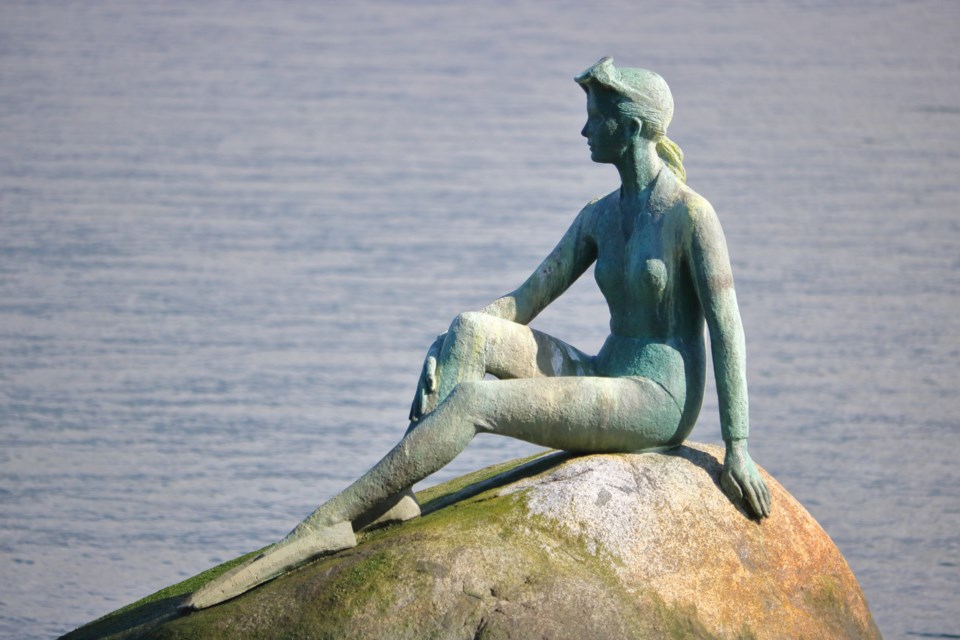When first hearing about The Chandelier — how it would light twice a day, wind up and down, etc., I thought that’s interesting. Then I heard the price tag and thought doesn’t matter who’s paying for it, that’s tone deaf.
I’m solidly in the Middle on the seven-meter tall, overtly opulent symbol of decadence, light fixture now adorning the underside of the Granville bridge. It neither bugs me nor fills me with wonder. Apparently, I’m a public art unicorn in Vancouver in 2019, because if you thought politics or religion will start a heated debate … boy-oh-boy … try public art.
Sparked by an almost $5 million chandelier under a bridge, Vancouverites are very much taking sides on whether we are doing public art properly.
This is not new territory. Guess the year on this quote:
“It was a new idea … there was tremendous opposition and great controversy, I still don’t know why”
That’s artist Elek Imredy after the unveiling of his own controversial public art piece … back in 1972. You’ve likely heard of it, it’s titled “Girl in a Wetsuit” and it sits iconically on the north side of Stanley Park.
We all love it. Right? Well, not in the early ‘70s.
Can we shift some millions another way?
Think about the public art we have here, the east van cross, the laughing men, the engagement rings, the Inukshuk, birds, digital whales and weird looking aeronautical thingies near the Stanley park causeway. Car totems, metal chairs, stop signs … the list literally goes on and on.
We have a little of everything. When do we have enough? Are we full? Can we shift some millions another way?
With every unveiling there is discussion on value. Again, the Chandelier that Westbank (developers of Canada House aka The Blade) paid the city to construct as part of their deal, checks in just shy of $5 million.
No, it’s not taxpayer dollars. But certainly, a cost that will be passed onto purchasers/renters of said development.
Now, can we have a conversation — perhaps even find some Middle— about how that public art budget works?
This is not about the chandelier, nor Art vs. Poverty. In this space I’m asking if “how it’s always been done” needs to change.
Rather than give big platforms to established artists in exchange for massive development permits, how about mandating developers build artist spaces on City owned property to the tune of the already established budgets? This could be done to deadline, perhaps before breaking ground.
I bet a $5 million dollar artist space would be quite fancy under the south end of the Cambie Street Bridge. Make it affordable for citizens of all walks to hone their craft and perhaps grow their respective passions. Visual art, music, whatever.
There are limitless possibilities how we could give artists space as developments gobble up the likes of Granville Island and the east side flats.
Call me Polyanna or an oversimplifier, fine. But it’s time for new ideas and we need City Hall to be ready to acknowledge that our outdated ways require immediate attention.
Public art is outstanding, but it needs to include public access, and should help cultivate more art. Today in Vancouver it costs almost as much to put your kid in art or music classes (which are no longer available in public schools) as enrolling them in hockey. Giving your kid a chance to draw, paint, sculpt or play costs literally thousands of dollars.
There are limitless possibilities how we could give artists space.
Art should not be reserved for the rich.
Discussing public art can turn a lively dinner party into a battleground: Poverty vs. The Chandelier; The Downtown East Side vs. The North End of the Granville Street Bridge; This is broader than that. It needs to be about accessibility rather than showy expense.
Jody Vance is a born and raised Vancouverite who’s spent 30 years in both local and national media. The first woman in the history of Canadian TV to host her own sports show in primetime, since 2011 she’s been working in both TV and radio covering news and current affairs.
SWIM ON:
- Jody Vance has written about public art before - perhaps even more controversial public art. If you can believe that.
- Daniel Marshall and the very strange case of the anomalous artifact that fell from the sky. Sounds like a Hardy Boys mystery, and it is...only much, much better.
- Spending other people's money is almost too easy - especially when it comes to public contracts, says Matthew Lau.



